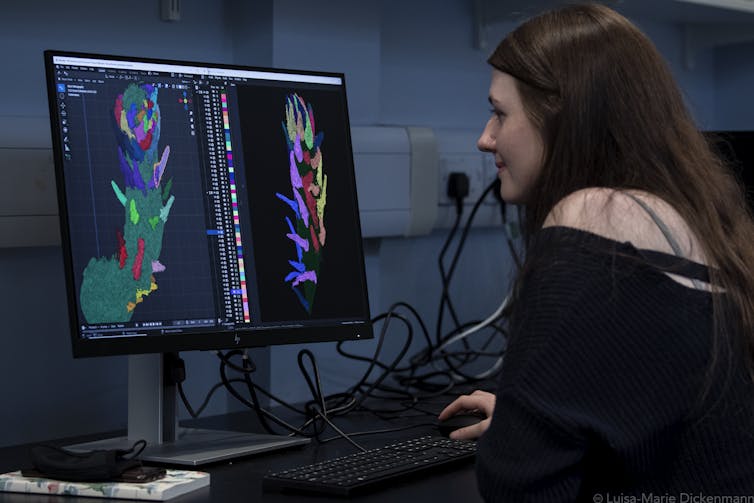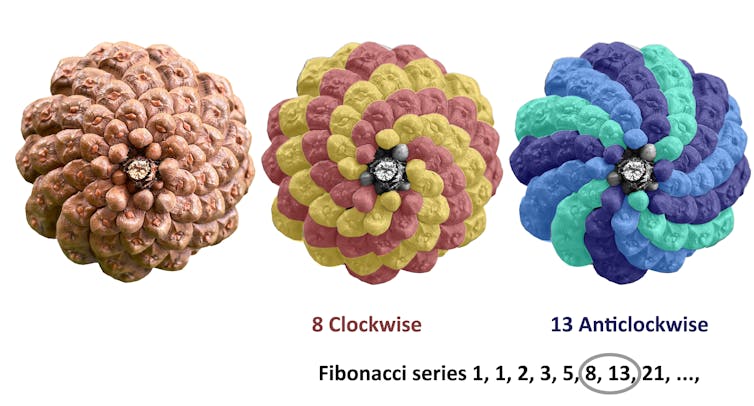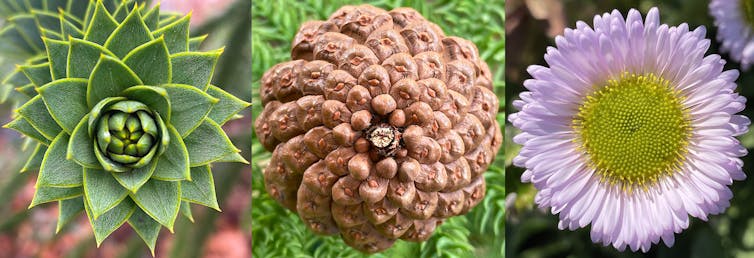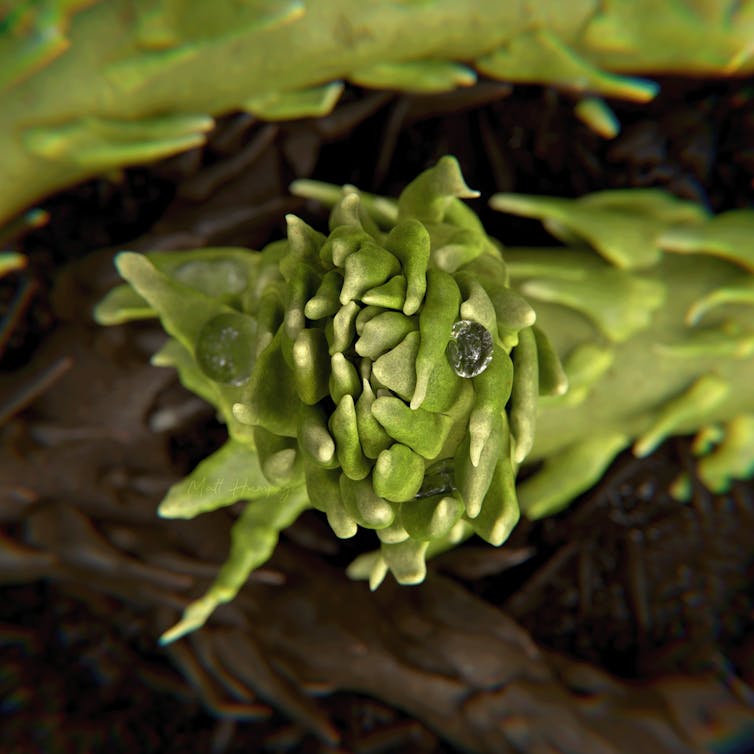
If your eyes have ever been drawn to the arrangement of leaves on a plant stem, the texture of a pineapple or the scales of a pinecone, then you have unknowingly witnessed brilliant examples of mathematical patterns in nature.
What ties all of these botanical features together is their shared characteristic of being arranged in spirals that adhere to a numerical sequence called the Fibonacci sequence. These spirals, referred to as Fibonacci spirals for simplicity, are extremely widespread in plants and have fascinated scientists from Leonardo da Vinci to Charles Darwin.
Such is the prevalence of Fibonacci spirals in plants today that they are believed to represent an ancient and highly conserved feature, dating back to the earliest stages of plant evolution and persisting in their present forms.

Many people think of plants as nice-looking greens. Essential for clean air, yes, but simple organisms. A step change in research is shaking up the way scientists think about plants: they are far more complex and more like us than you might imagine. This blossoming field of science is too delightful to do it justice in one or two stories. This article is part of a series, Plant Curious, exploring scientific studies that challenges the way you view plantlife.
However, our new study challenges this viewpoint. We examined the spirals in the leaves and reproductive structures of a fossilised plant dating back 407 million years. Surprisingly, we discovered that all of the spirals observed in this particular species did not follow this same rule. Today, only a very few plants don’t follow a Fibonacci pattern.

What are Fibonacci spirals?
Spirals occur frequently in nature and can be seen in plant leaves, animal shells and even in the double helix of our DNA. In most cases, these spirals relate to the Fibonacci sequence – a set of numbers where each is the sum of the two numbers that precede it (1, 1, 2, 3, 5, 8, 13, 21 and so on).
These patterns are particularly widespread in plants and can even be recognised with the naked eye. If you pick up a pinecone and look at the base, you can see the woody scales form spirals that converge towards the point of attachment with the branch.
At first, you may only spot spirals in one direction. But look closely and you can see both clockwise and anticlockwise spirals. Now count the number of clockwise and anticlockwise spirals, and in almost every case the number of spirals will be integers in the Fibonacci sequence.

This particular instance is not an exceptional case. In a study that analysed 6,000 pinecones, Fibonacci spirals were found in 97% of the examined cones.
Fibonacci spirals are not just found in pine cones. They are common in other plant organs such as leaves and flowers.
If you look at the tip of a leafy shoot, such as that of a monkey puzzle tree, you can see the leaves are arranged in spirals that start at the tip and gradually wind their way round the stem. A study of 12,000 spirals from over 650 plant species found that Fibonacci spirals occur in over 90% of cases.
Due to their frequency in living plant species, it has long been thought that Fibonacci spirals were ancient and highly conserved in all plants. We set out to test this hypothesis with an investigation of early plant fossils.

Non-Fibonacci spirals in early plants
We examined the arrangement of leaves and reproductive structures in the first group of plants known to have developed leaves, called clubmosses.
Specifically, we studied plant fossils of the extinct clubmoss species Asteroxylon mackiei. The fossils we studied are now housed in museum collections in the UK and Germany but were originally collected from the Rhynie chert – a fossil site in northern Scotland.
We took images of thin slices of fossils and then used digital reconstruction techniques to visualise the arrangement of Asteroxylon mackiei’s leaves in 3D and quantify the spirals.
Based on this analysis, we discovered that leaf arrangement was highly variable in Asteroxylon mackiei. In fact, non-Fibonacci spirals were the most common arrangement. The discovery of non-Fibonacci spirals in such an early fossil is surprising as they are very rare in living plant species today.

Distinct evolutionary history
These findings change our understanding of Fibonacci spirals in land plants. They suggest that non-Fibonacci spirals were ancient in clubmosses, overturning the view that all leafy plants started out growing leaves that followed the Fibonacci pattern.
Furthermore, it suggests that leaf evolution and Fibonacci spirals in clubmosses had an evolutionary history distinct from other groups of living plants today, such as ferns, conifers and flowering plants. It suggests that Fibonacci spirals emerged separately multiple times throughout plant evolution.
The work also adds another piece to the puzzle of a major evolutionary question – why are Fibonacci spirals so common in plants today?
This question continues to generate debate among scientists. Various hypotheses have been proposed, including to maximise the amount of light that each leaf receives or to pack seeds efficiently. But our findings highlight how insights from fossils and plants like clubmosses may provide vital clues in finding an answer.
Sandy Hetherington receives funding for this research from a UK Research and Innovation Future Leaders Fellowship MR/T018585/1 and a Royal Society Research Grant RGS\R2\212063.
Holly-Anne Turner does not work for, consult, own shares in or receive funding from any company or organisation that would benefit from this article, and has disclosed no relevant affiliations beyond their academic appointment.
This article was originally published on The Conversation. Read the original article.







